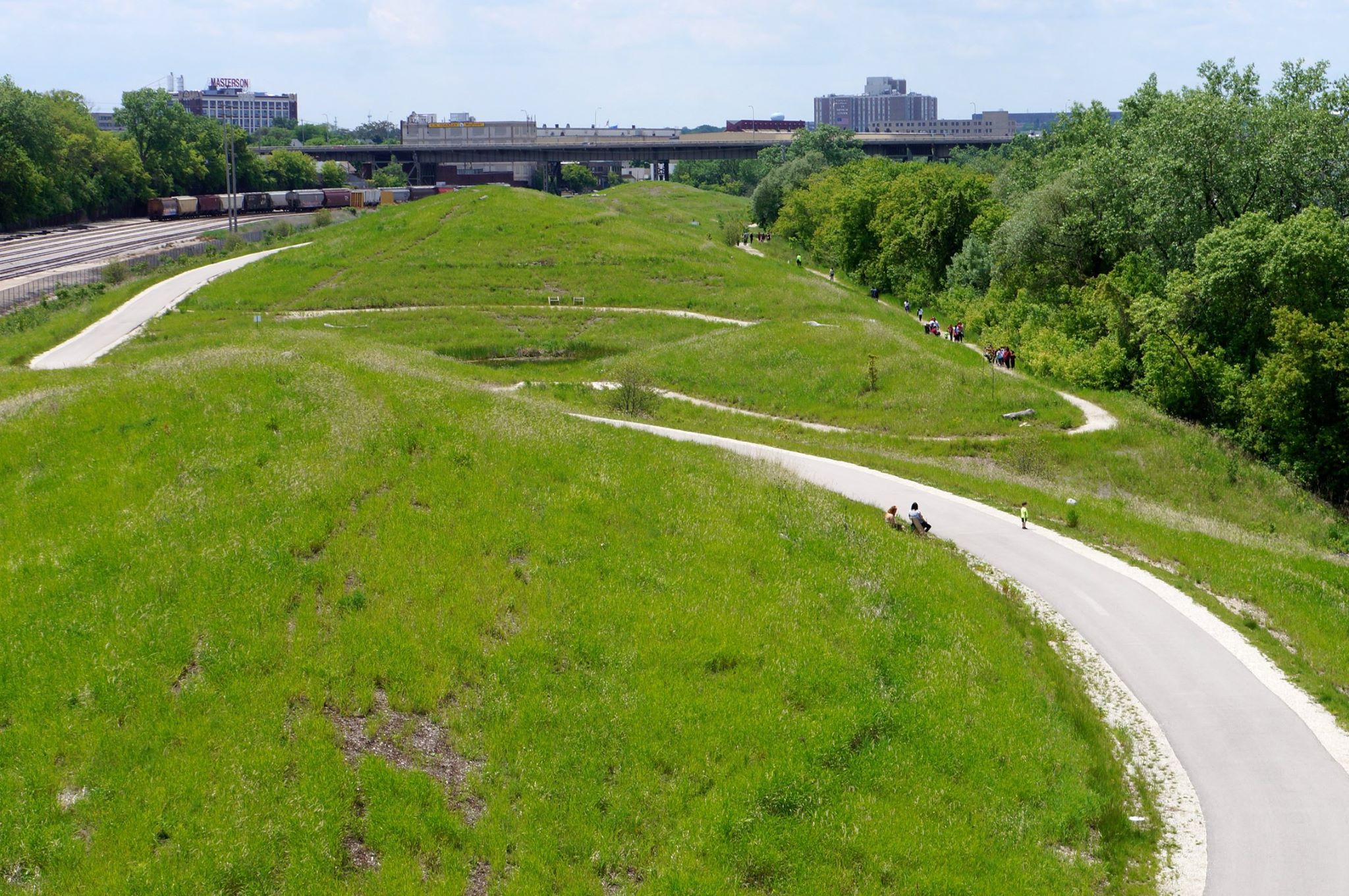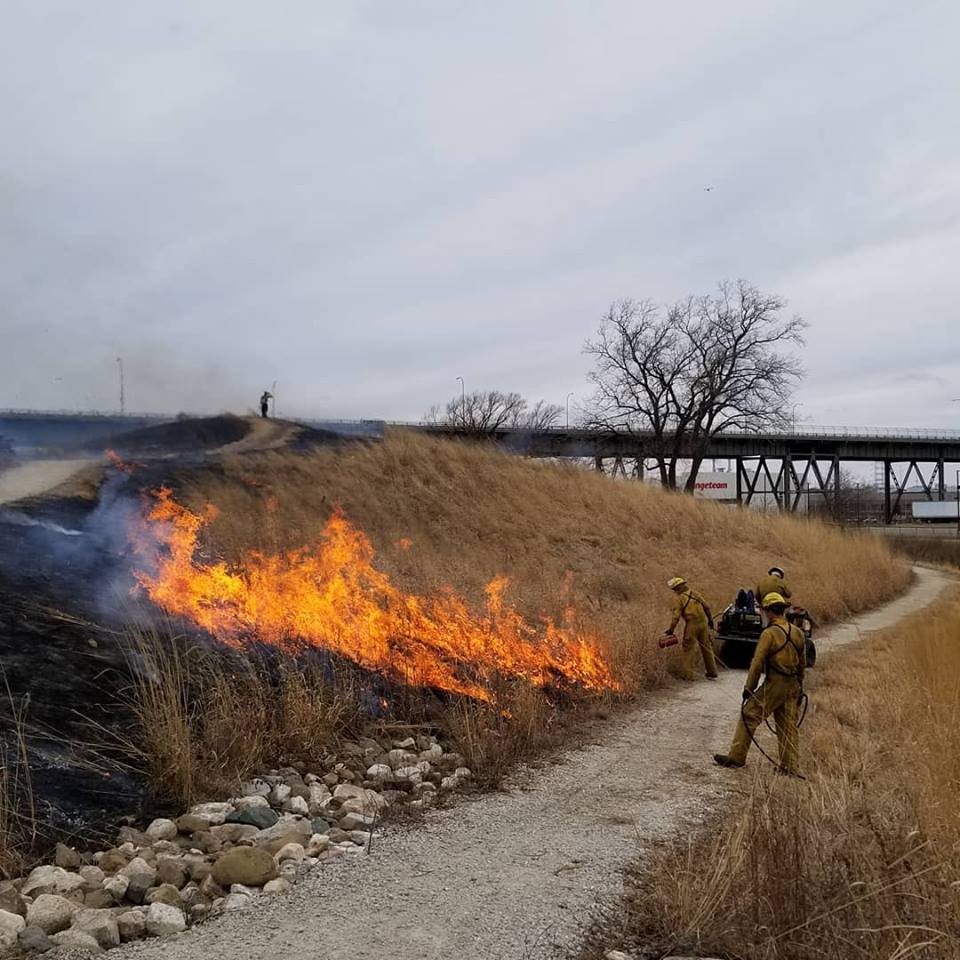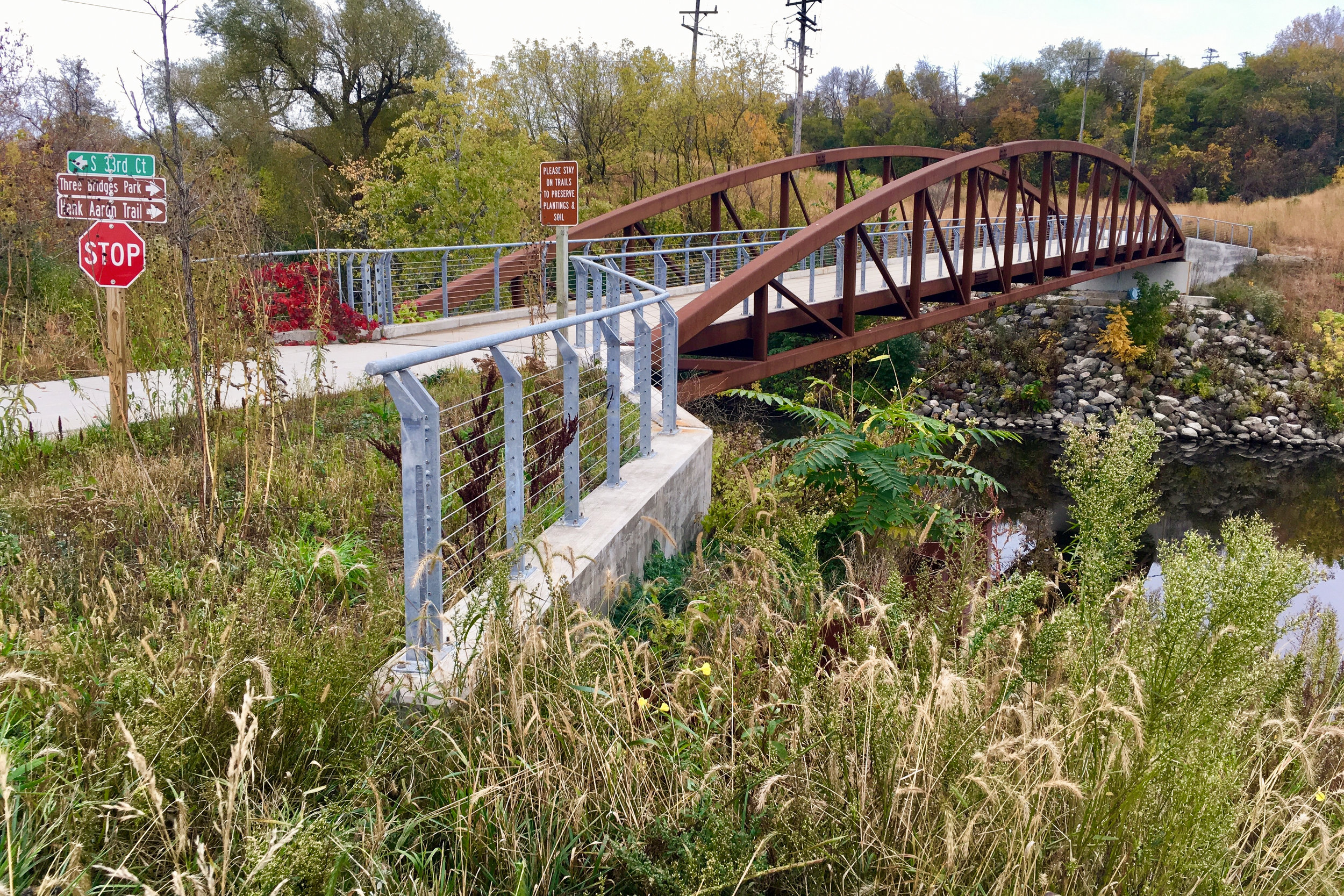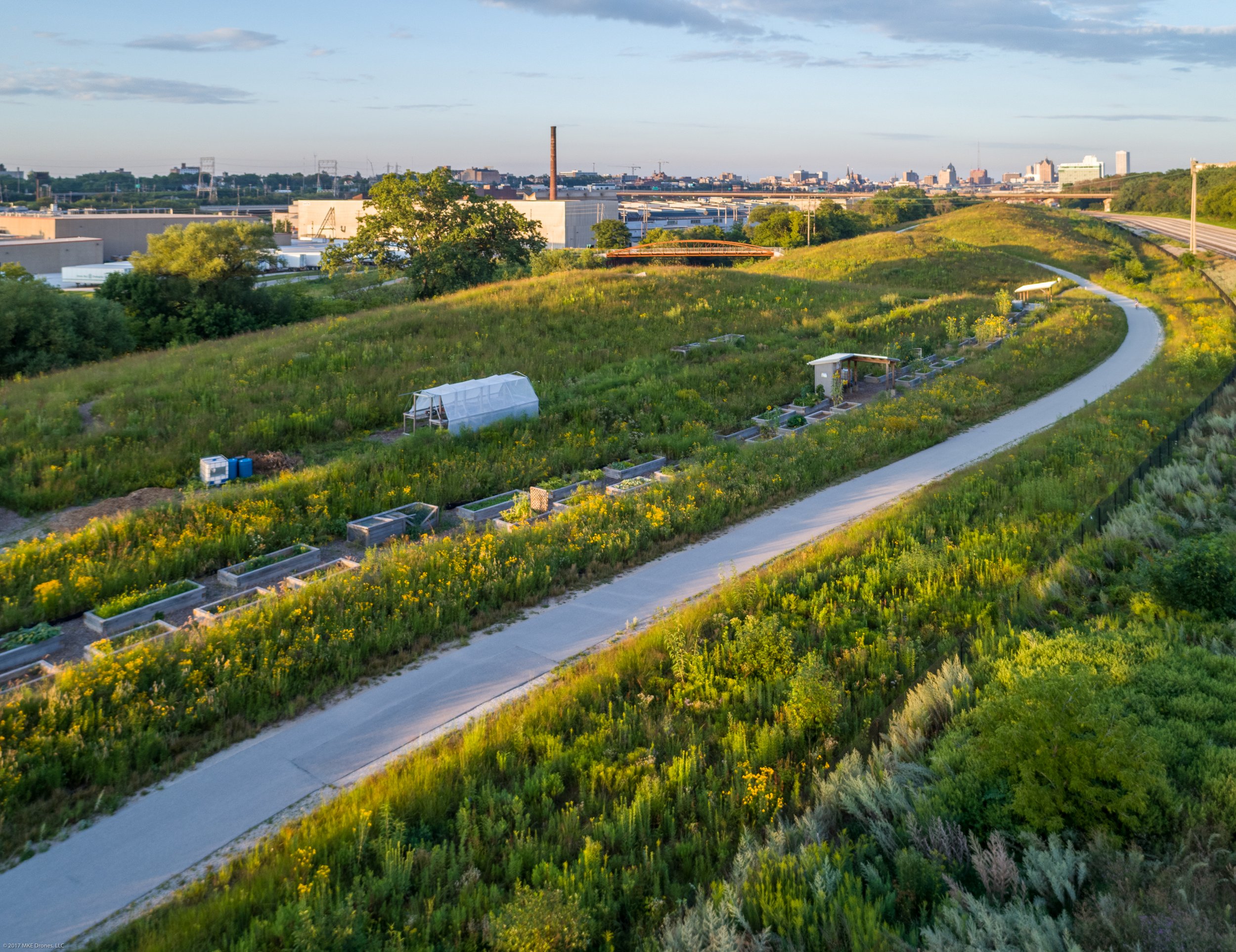
THREE BRIDGES PARK
THREE BRIDGES PARK
Whether it’s the paved trails that wind around sculpted rolling hills or the small oaks that are growing into mighty giants or the stunning views of Milwaukee’s skyline, nature and impressive views await you at every corner of the award-winning Three Bridges Park, a 24-acre urban oasis in the Menomonee River Valley.
Located along the Menomonee River between 27th and 37th Streets, Three Bridges Park was once part of a wild rice marsh, then a rail yard, and then a vacant site for decades. Through passion, persistence, and partnership, Three Bridges Park opened in 2013 and is enjoyed by more than 50,000 visitors each year.
The park features:
Two miles of accessible biking & walking trails
River access for fishing
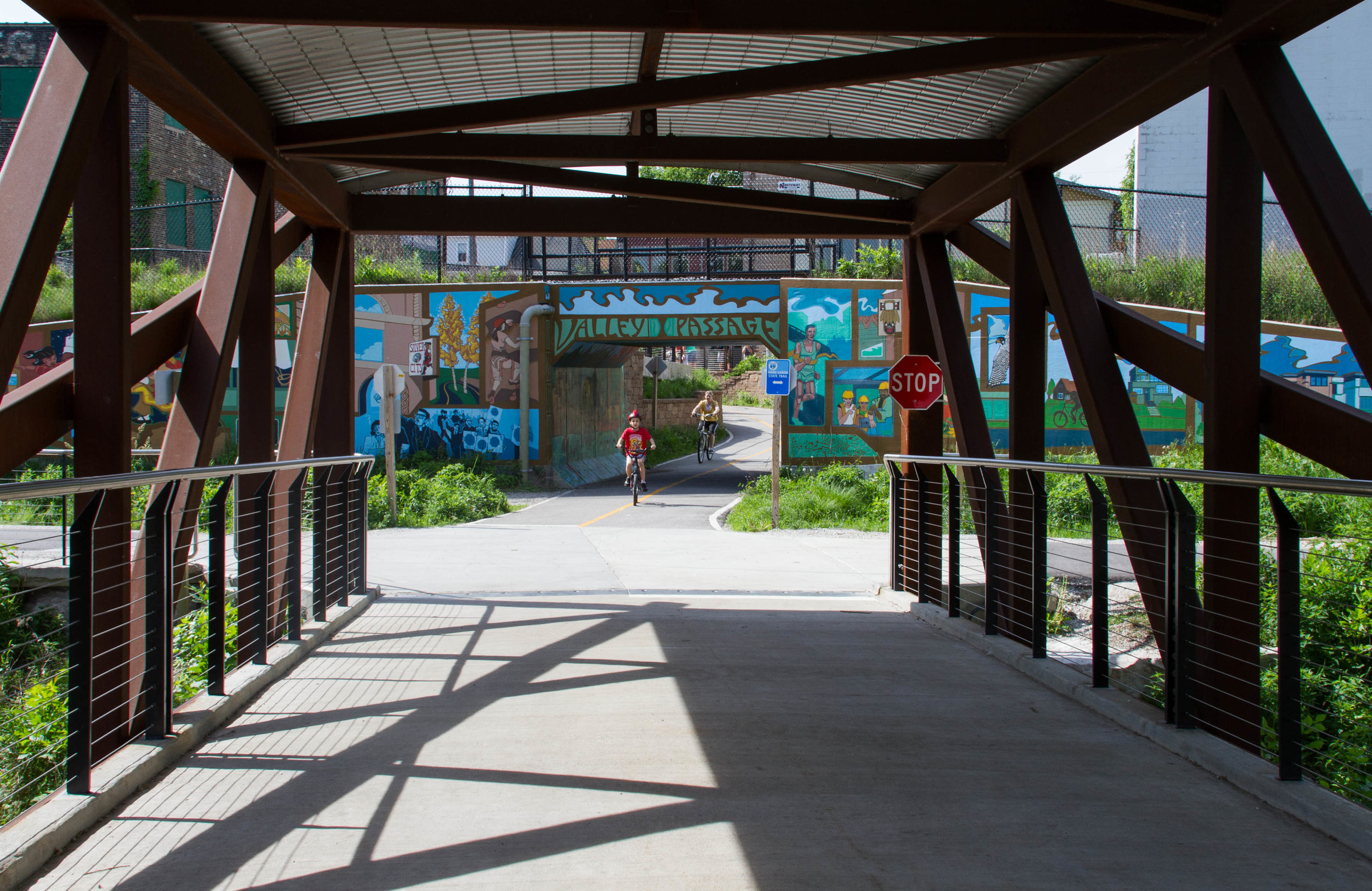
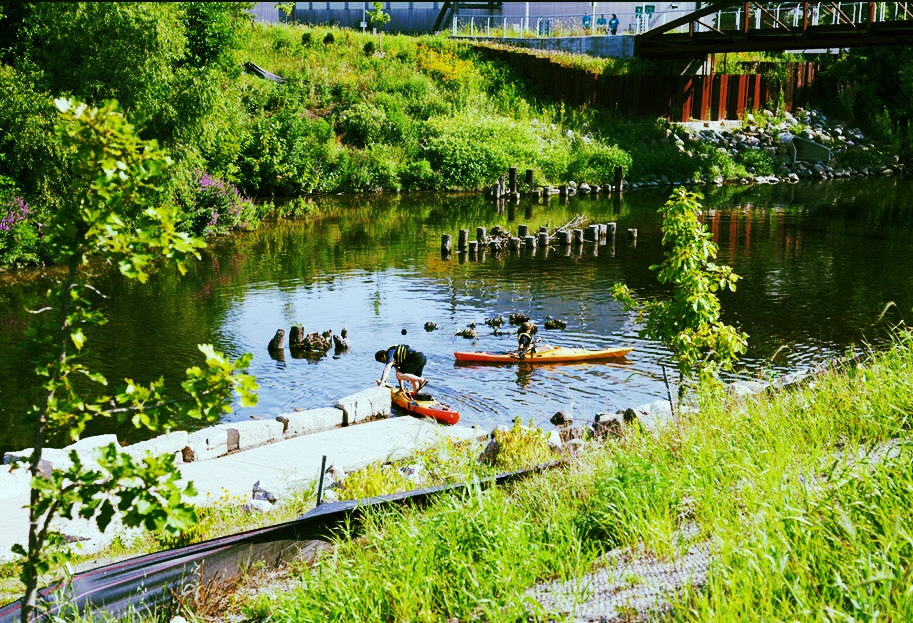

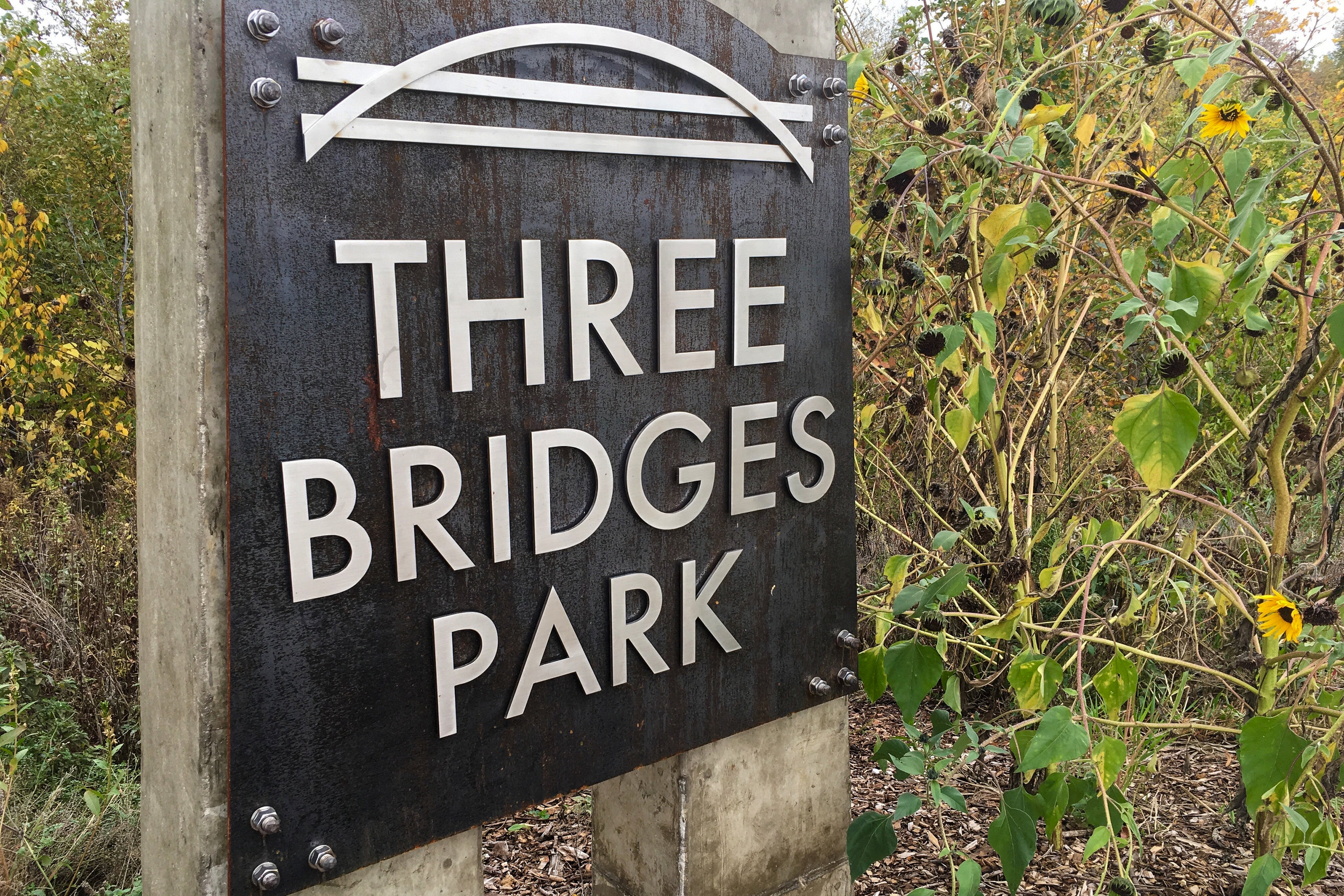
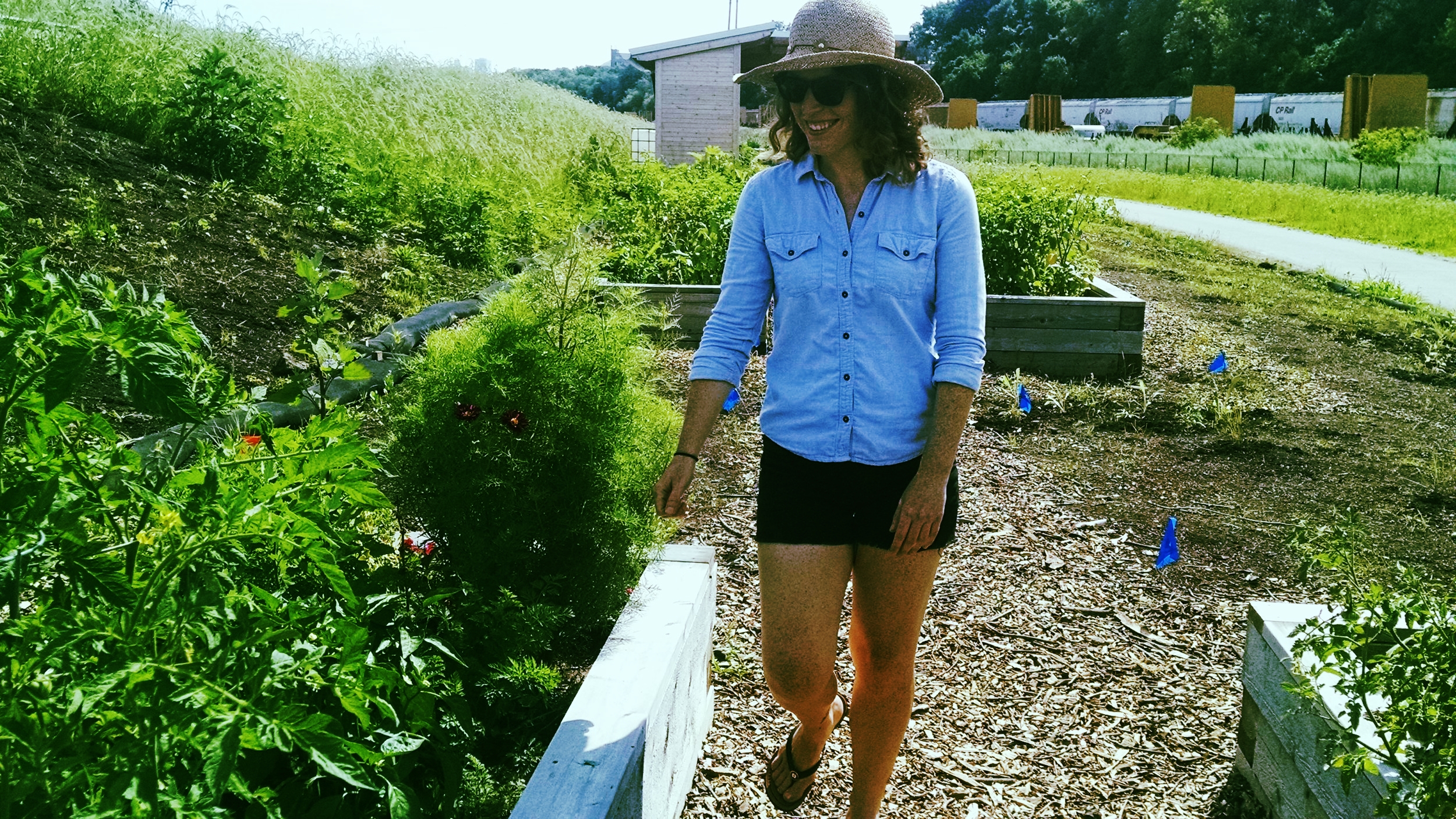
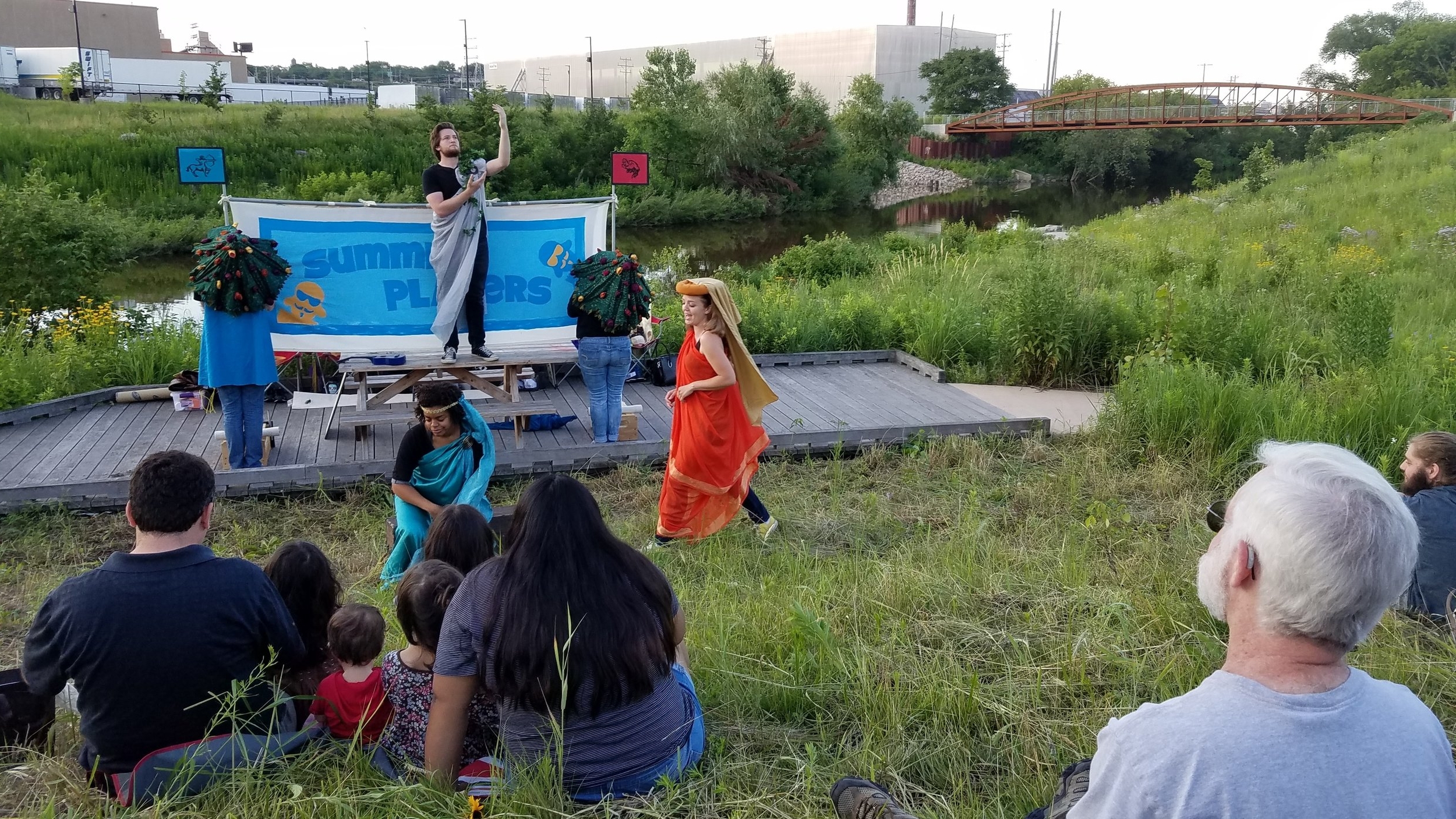
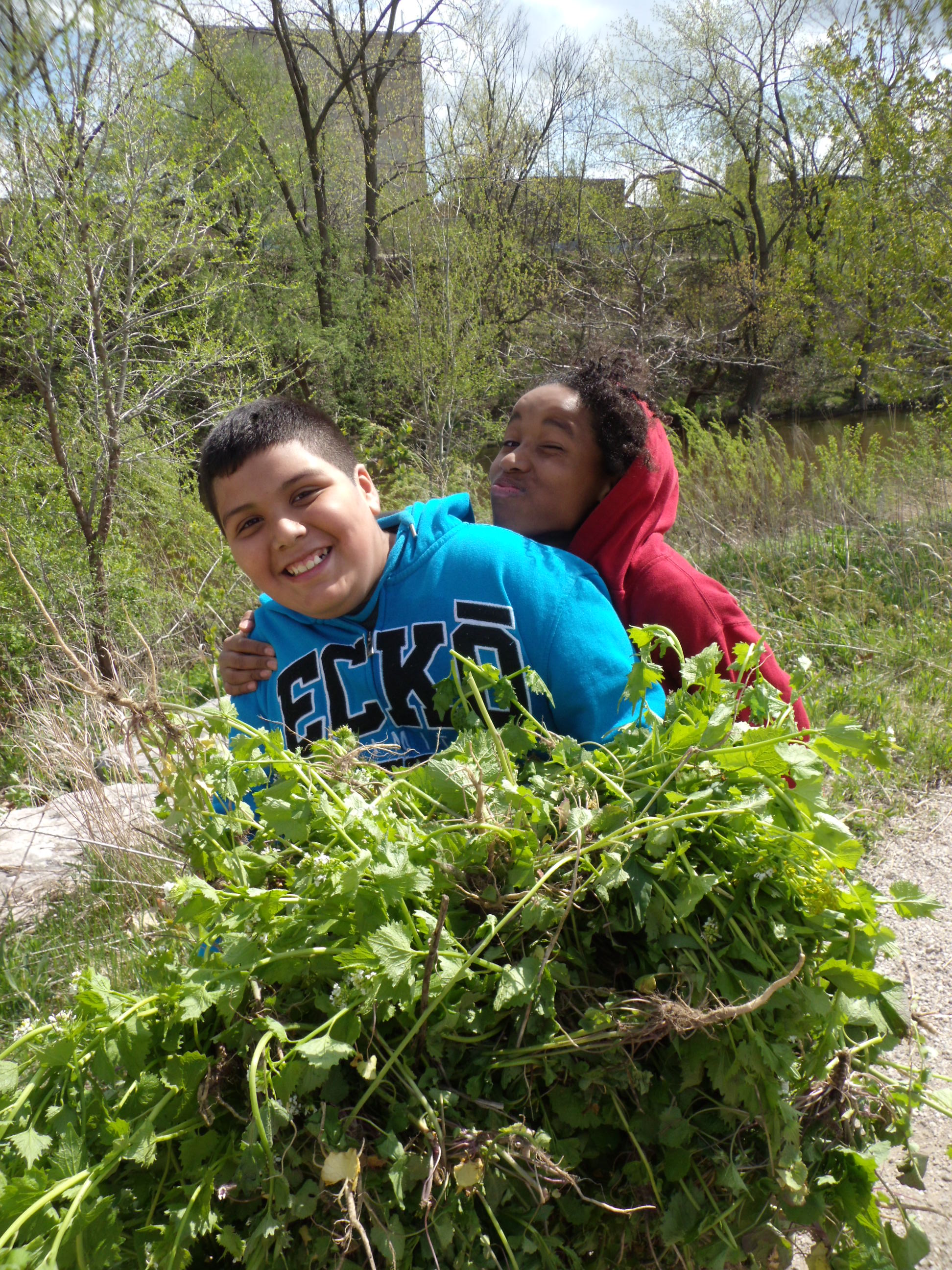
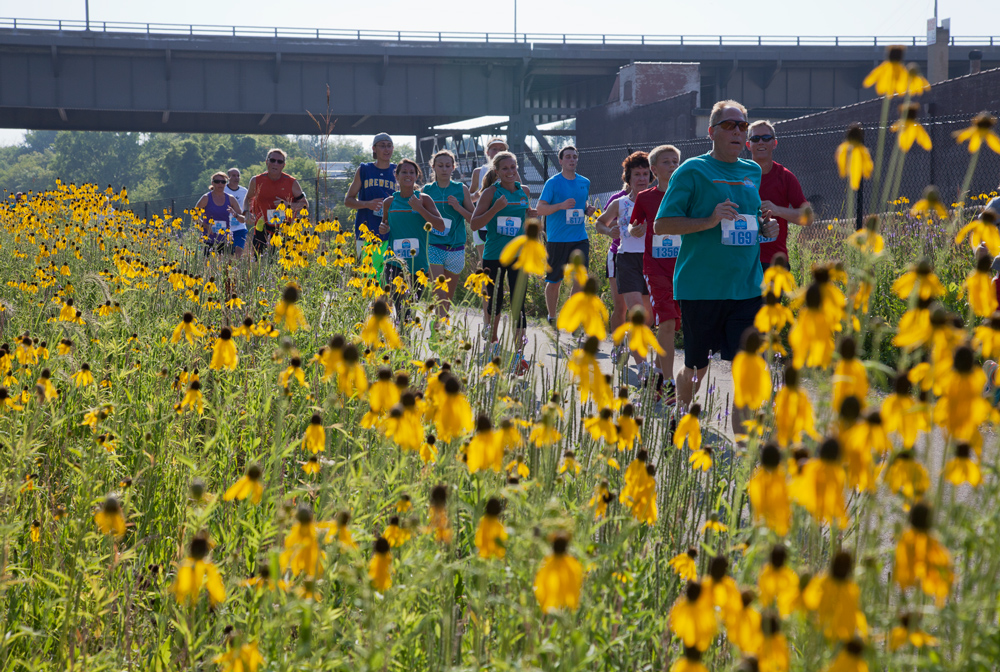

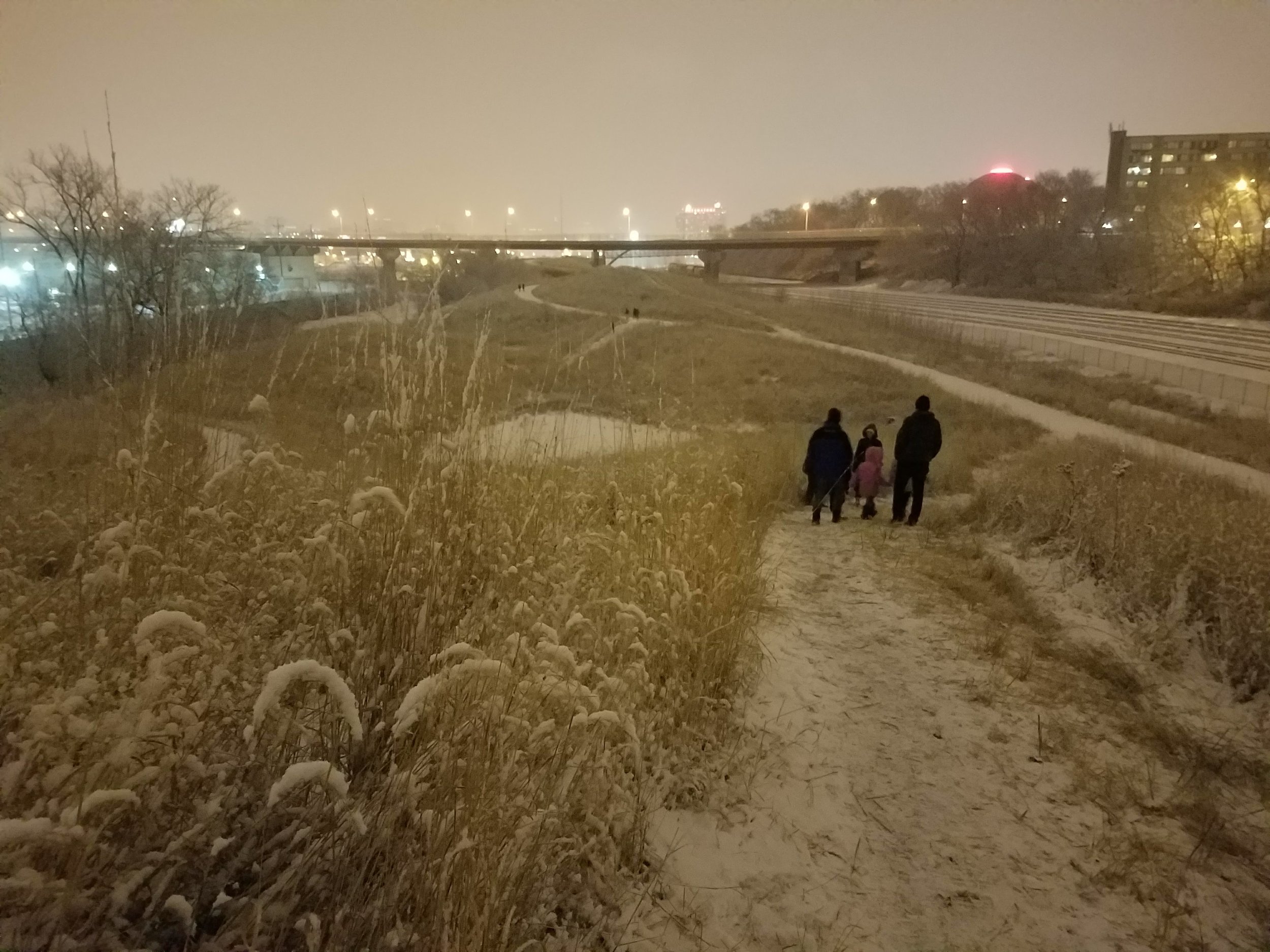

Looking for some fun outdoors activities and events for your family and friends? Want to borrow some snowshoes, kayaks, or camping gear? Let the Urban Ecology Center help you get active!
Help this park continue to thrive! Volunteer opportunities abound - community science, land stewardship, special events, and much more!
“I love this park for walk or ride a bike along the river. Birds and fish show you how you change an abandoned industrial area to a place of rejuvenation and life. Summer is beautiful with wild flowers.”
Location
Parking
Three Bridges Park isn’t visible from the street. There are four convenient places to park from which you can walk into the park. The map above shows where you may park or you may download a PDF.
Street parking on W Canal St across from Ingeteam (3550 W Canal Street). Pay attention to posted signs as parking permissions vary, especially when the Brewers are playing (see schedule here).
Behind Palermo’s Pizza at the south end of 33rd Court.
Near the Urban Ecology Center (3700 W Pierce Street).
In the parking lot behind (to the north of) the Mitchell Park Horticultural Conservancy (The Domes, 524 S Layton Boulevard).
Things to See & Do Here
This park is more than a pretty place. The Urban Ecology Center (UEC) uses it as their outdoor science classroom to give kids hands-on experiences to explore waterways, native flora and fauna, and regional history. It is a place where volunteers nurture the land for future generations. It is a quiet place of respite in the heart of the city. It is a Milwaukee destination for outdoor recreation and learning.
Explore the trails via bike, foot, skates, or wheels
Join Us for Valley Week!
Valley Week is an annual event in September that through MVP and our partners, shows our community what is go great about The Valley and specifically at Three Bridges Park, UEC’s Take it Outside- Bike Day. From September 20th- 27th, come celebrate the Menomonee River Valley and everything it has to offer!
“A beautiful walk, quiet and peaceful, right in the middle of the city.”
Fish or kayak in the Menomonee River - learn more about boat ramps
Enroll in outdoor activities and events
Volunteer in land stewardship - planting, pulling, and more
Read about Urban Ecology Center’s Research and Community Science Findings
Enjoy the Public Art
The mural adorning the walls of the Valley Passage, the tunnel connecting the Menomonee River Valley and Silver City neighborhood, illustrate what can be experienced on the opposite side and depict the Valley of yesterday and today. Wisconsin artist Chad Brady completed the mural in 2011.
A permanent donor sculpture was installed in Three Bridges Park in 2017 to recognize the more than 200 foundations, corporations, and individuals who supported the Menomonee Valley – From the Ground Up project at the $1,000+ level.
Donors’ names are inscribed on the arch’s interior, a long-lasting symbol of what our community can accomplish when we come together. Thank you to ALL the donors and supporters who made this project possible!
"Bridge" is composed of 20 local glacial boulders, selected by the artist, Peter Flanary, for form and color, and averaging two feet in diameter each. The artwork relates to the Menomonee River Valley landscape, and explores the idea of "connection" in broad and various ways.
This sculpture is located near the Potawatomi Bridge. View a video of the sculpture's assembly. (Photo: Peter Flanary)
There's more here than you can see…
Rolling Hills - Hills were built to resemble natural glacial landforms (kames, drumlins, and eskers) to teach children about southeast Wisconsin’s natural topography in true to life form and almost to scale.
River Restoration - Stones and boulders were added to the river to vary the direction of water flow and improve fish habitat.
Natural Stormwater Filtration - Swales, a low area of land that collects stormwater, were designed to manage water runoff, filter pollutants, and increase rainwater infiltration.
Snake Hibernacula - Underground chambers provide a home where snakes can safely spend the winter protected from the cold.
Wildlife & Native Vegetation - The list of native plants and animals, those that were here long before the 1800s, grows each year. Read more in the Urban Ecology Center’s 2017 Community Science Review.
Community Scientists - The Urban Ecology Center welcomes community and professional scientists to Three Bridges Park to perform research and observe the wildlife. Read more in the Urban Ecology Center’s 2017 Community Science Review.
The Urban Ecology Center's Community Science Program serves as a meaningful bridge between academic research and the community-at-large. The program creates collaborative spaces for research between professional and community scientists and creates a more engaged, knowledgeable and ecologically literate community.
Rolling Hills (Photo: Adam Carr)
Wildlife & Native Vegetation: The first prescribed burn in Three Bridges Park occurred in 2018 and is an important tool in managing native habitats. (Photo: Jeff Veglahn)
Natural Stormwater Filtration: Swales (Photo: Eddee Daniel)
“This is one of my favorite places in the city. The Hank Aaron State Trail, which I run/bicycle regularly, runs through it. Apart from the trail, as a natural enclave in the midst of the city, it is beautiful, full of flowers, birds, butterflies; I love spending a day here...”
Frequently Asked Questions
Can I reserve space or hold an event in Three Bridges Park?
Three Bridges Park is available on a first-come, first-served basis. There are no grills or open flames allowed due to the prairie grass. There is one small platform that could fit one picnic table near the 33rd Court bridge and a cement platform near the Domes bridge. Note that there are no picnic tables or garbage bins in the park due to maintenance costs. Please be respectful of all park users and remove everything you bring in so we can keep a clean, green park for all. There are no restrooms in the park. The closest restrooms are in the Urban Ecology Center (3700 W Pierce Street) or in the picnic area of Mitchell Park.
Why isn’t the Hank Aaron State Trail plowed in the winter?
Currently, the Wisconsin Department of Natural Resources does not have funding to plow the Hank Aaron State Trail; however, partners at the City of Milwaukee generally plow from Selig Drive east to 25th Street, and adjacent property owners generally take care of the path in front of their buildings east from 25th up to about 11th Street.
History of this park
On Saturday, July 20, 2013, Three Bridges Park opened to the public with a dedication and family celebration. It is the largest park developed in Milwaukee in decades and marks the continued transformation of the Menomonee River Valley into an asset for families, children, fishers, hikers, bikers, boaters, businesses, and employees in the area.
1960s
2010 - Before Three Bridges Park (Photo: Mark Was)
2013 - Three Bridges Park
2006
2013 - Community members met at the park's three bridges and walked toward each other to meet in the park's center, a symbolic act to celebrate the renewed physical connection between the Menomonee River Valley and adjacent neighborhoods.
“In 20 years, some kid is going to say ‘No way was this a rail yard! This has always been a park.’ I hear a lot of people who feel like seeing that transformation makes them really hopeful. If Milwaukee can do this, then really what can’t we do?”
What's in a name?
With its steep banks and man-made barriers like train tracks and freeways, the Menomonee River Valley has historically been largely disconnected from the rest of the city. This meant that nearby neighbors were cut off from its employment opportunities and recreational assets. The park’s three bridges provide bike/pedestrian connections to bring our community together.
Valley Passage and the Silver City Bridge
The Valley Passage was constructed at the same location where generations of workers streamed through a tunnel beneath the railroad tracks and across the river via a pedestrian bridge on their way to jobs in the Menomonee River Valley. When industry left in the mid-1900s, the bridge was torn down. The Valley Passage (a railroad underpass), the Silver City bike/pedestrian bridge over the Menomonee River, and a path up to 37th and Pierce Streets restores that historic connection between the Menomonee River Valley and Silver City neighborhood.
Past
This walk to work connection to Valley jobs was closed in the 1960s.
The tunnel to the Valley was closed in the 1970s.
Present
Current Silver City Bridge
The Valley Passage was reopened in 2010.
Menomonee Bridge near 33rd Court
The Menomonee Bridge connects Valley employees and visitors via 33rd Court behind Palermo Villa. (Photo: SLR Images)
Potawatomi Bridge leading to Mitchell Park/Domes
The Potawatomi Bridge connects to Mitchell Park and the Domes. (Photo: SLR Images)
Three Bridges Park offers a chance to create a place for people to come together in what was once widely thought of as far back as the native tribes and spans Father Groppi's march across the Valley and Hank Aaron's accomplishments playing baseball in the Valley's west end. The Menomonee River Valley has a rich narrative of bridging the past to the future, bridging north to south, and bridging early and modern manufacturing. Three Bridges Park bridges nature and the city, allowing neighbors to cross over the industrial corridor and access a place of respite in the heart of the city. The park's programming bridges the past and the future, educating about the rich history of this land and connecting people through ongoing volunteer activities.
Learn more about this park's incredible transformation from a vacant railyard to a much loved park in this video from 2014, one year after the park opened.














